| Columns Retired Columns & Blogs |
Definitive Technology Mythos STS SuperTower loudspeaker Measurements
Sidebar 3: Measurements
The Definitive Technology Mythos STS SuperTower is specified as having a high voltage sensitivity: 93dB/2.83V/m. My estimate of its sensitivity, taken on its tweeter axis, was not quite as high, at 91.5dB(B)/2.83V/m, but this is still much higher than average. The Mythos STS will work very well with low-powered amplifiers, such as the Cayin integrated with which I auditioned the speakers at Sandy Gross's apartment. The speaker's impedance (fig.1) hardly drops below 4 ohms, but the use of a passive high-pass filter for the midrange units does lead to an awkward combination of 4.5 ohms magnitude and –50° capacitive phase angle at 80Hz. Tube amplifiers will work best with the STS when used from their 4 ohm taps.
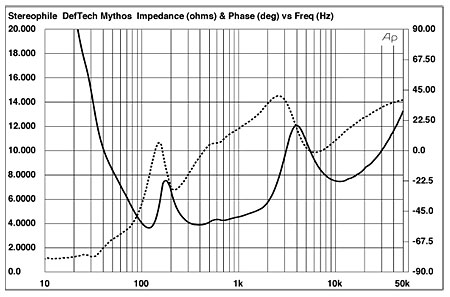
Fig.1 Definitive Technology Mythos STS SuperTower, electrical impedance (solid) and phase (dashed). (2 ohms/vertical div.)
The impedance traces are free from the small glitches that would imply the presence of cabinet resonances of various kinds. Even so, investigating the slim, solid-feeling enclosure's vibrational behavior uncovered a couple of fairly strong modes around 340Hz on the sidewalls level with the lower midrange unit (fig.2). However, the affected area was restricted; there will probably be no subjectively audible consequences of this behavior.
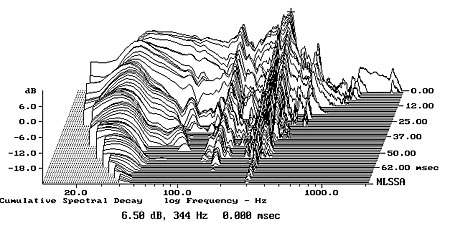
Fig.2 Definitive Technology Mythos STS SuperTower, cumulative spectral-decay plot calculated from the output of an accelerometer fastened to the center of the sidewall 10" from the top (MLS driving voltage to speaker, 7.55V; measurement bandwidth, 2kHz).
Turning to the Mythos's acoustic output, the green trace in fig.3 shows the nearfield response of the powered woofer, the red traces that of the bass radiators. The sharp notch at 52Hz in the woofer's output indicates that this is its tuning frequency. However, the rise in the bass radiators' output below that frequency indicates that some low-bass equalization has been applied, while the sharp rolloff below 32Hz is due to an infrasonic filter, presumably used to protect the LF unit and radiators from subsonic overload. The blue trace in fig.3 is the nearfield output of the woofer; it rolls off sharply below 150Hz, which will ameliorate the potential drive difficulty below 100Hz. The level matching between midrange unit and woofer in this graph will be affected by the latter's gain control, but set to Flat, there is a little overlap in the drivers' outputs in the crossover region, which gives rise to a slight boost in summed outputs in the upper bass (black trace below 350Hz).
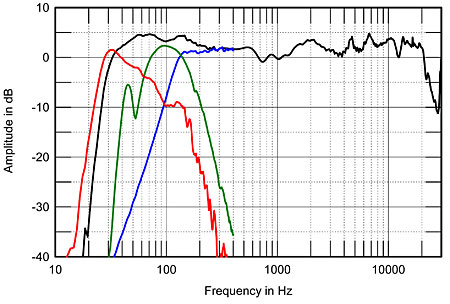
Fig.3 Definitive Technology Mythos STS SuperTower, anechoic response on tweeter axis at 50", averaged across 30° horizontal window and corrected for microphone response, with the nearfield responses of the midrange unit (blue), woofer (green), and bass radiators (red), plotted in the ratios of the square roots of their radiating areas below 400Hz, 400Hz, and 350Hz, respectively, and the complex sum of the nearfield responses plotted below 350Hz (black).
Higher in frequency, the Mythos's quasi-anechoic response, averaged across a 30° horizontal angle on the tweeter axis (fig.3, black trace above 350Hz), shows a slight lack of energy in the upper midrange. Whether the listener perceives this as an absence or as a boost in the lower midrange and treble will depend on the music being played. I suspect that it is this slight imbalance that led to WP's comment about some sung notes being emphasized at the expense of others. The dip above the audioband, followed by the rise to the 30kHz limit of this graph, are due to the tweeter's dome resonance, which is commendably high in frequency and well above audibility.
The response in fig.3 was taken with the grille removed. Wes did comment that he didn't like the sound with the grilles on. The difference made by adding the grille is shown in fig.4; it obviously has a large effect on the sound, but if you compare figs. 3 and 4, the treble response is actually a little smoother with the grille in place. The horizontal dispersion without the grille in place is shown in fig.5. Again, by comparison with the response in fig.3, the dip at around 5.5kHz can be seen to fill in to the speaker's sides, though the off-axis notch at 10kHz is real enough. Vertically (fig.6), the use of a D'Appolito array for the upper-frequency drive-units results in a balance that doesn't change significantly over quite a wide angle.
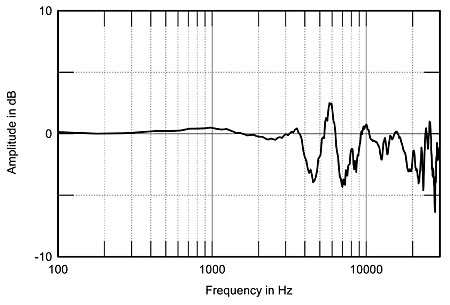
Fig.4 Definitive Technology Mythos STS SuperTower, effect of grille on anechoic response on tweeter axis at 50" (5dB/vertical div.).
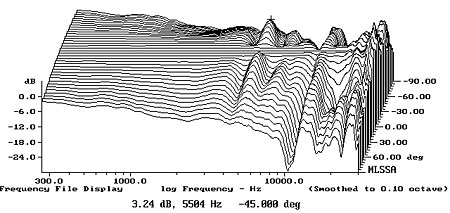
Fig.5 Definitive Technology Mythos STS SuperTower, lateral response family at 50", normalized to response on tweeter axis, from back to front: differences in response 90–5° off axis, reference response, differences in response 5–90° off axis.

Fig.6 Definitive Technology Mythos STS SuperTower, vertical response family at 50", normalized to response on tweeter axis, from back to front: differences in response 15–5° above axis, reference response, differences in response 5–15° below axis.
Fig.7 shows how these quasi-anechoic response measurements sum in WP's smaller listening room. The treble balance is also exceptionally even, though perhaps with a bit too much upper-octave energy when you consider the increased absorption of the room furnishings in this region. The woofer-level controls were set to WP's preferred positions; this results in a little too much energy below 100Hz, with then a steep rolloff below 30Hz. I am not surprised that Wes liked the DefTech's low frequencies. What did surprise me was the excess of in-room energy in the middle midrange, which I had not expected to be as pronounced from the on-axis response and the dispersion plots. I could hear this excess as a touch of "character" added to string music, which made violas sound a little more like cellos.
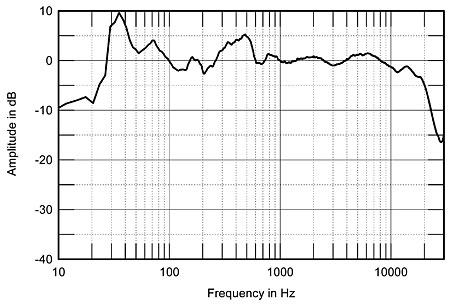
Fig.7 Definitive Technology Mythos STS SuperTower, spatially averaged, 1/6-octave response without grilles in WP's listening room.
Turning to the time domain, the Mythos STS's step response on the tweeter axis (fig.8) indicates that all three drive-units are connected with positive acoustic polarity, with each one's step smoothly integrated with that of the next lower in frequency on this axis. This is optimal crossover design. The cumulative spectral-decay plot (fig.9) is respectably clean, though some low-level resonant modes can be seen at the bottom of the tweeter's passband, these due presumably to residual cone-breakup modes that have not been fully suppressed by the crossover filter. Nevertheless, they are low in level.
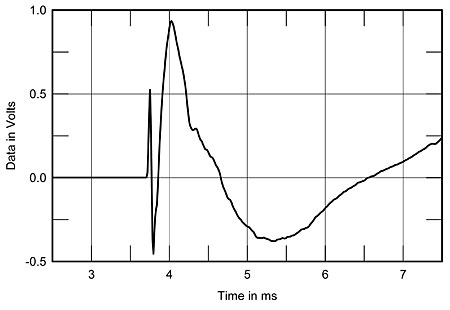
Fig.8 Definitive Technology Mythos STS SuperTower, step response on tweeter axis at 50" (5ms time window, 30kHz bandwidth).
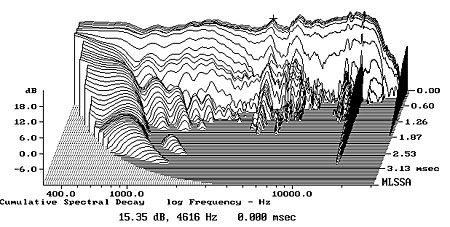
Fig.9 Definitive Technology Mythos STS SuperTower, cumulative spectral-decay plot on tweeter axis at 50" (0.15ms risetime).
Overall, its measurements reveal the Definitive Technology Mythos STS SuperTower to be well engineered.—John Atkinson
- Log in or register to post comments




































